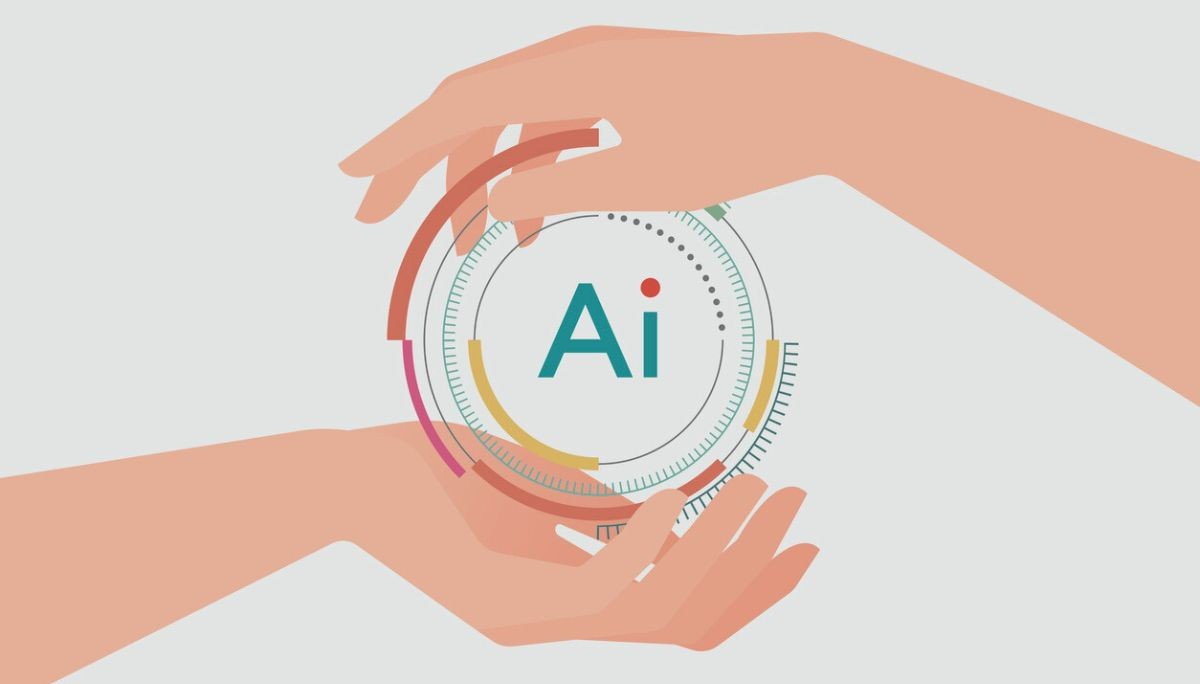What Is Design in Engineering? Roles & Skills for Design Engineers
By
Liz Fujiwara
•
Oct 13, 2025
Design in engineering is the structured process of transforming concepts and ideas into functional, practical products that address real-world problems and meet user needs. It combines creativity, technical knowledge, and problem-solving to ensure that designs are not only innovative but also safe, reliable, and efficient. In this article, we’ll examine what design in engineering entails, the essential skills that design engineers must master, and the critical responsibilities they hold in bringing ideas from concept to reality. We will also explore how modern tools and methodologies enhance the design process, enabling engineers to create solutions that are both effective and sustainable.
Key Takeaways
Design in engineering integrates functionality, aesthetics, and user-focused solutions to drive innovation and optimize product development.
Design engineers are responsible for conceptualizing ideas, creating prototypes, and testing solutions, all of which require strong collaboration and communication skills.
Opportunities for design engineers exist across diverse industries, with career growth supported by continuous skill development and the ability to adapt to emerging technologies.
Understanding Design in Engineering

Design in engineering is a multifaceted discipline that focuses on creating solutions that are functional, efficient, and visually appealing. This process is crucial for developing products and systems that meet user needs and align with market demands. Design engineers work to transform abstract ideas into tangible innovations, refining their approaches to achieve optimal results in both design and engineering.
Effective engineering design fosters innovation and ensures that user needs are met, enhancing efficiency and satisfaction across industries. By integrating advanced technologies and incorporating user feedback, design engineers create products that improve functionality, safety, and overall user experience. A holistic approach to design enables engineers to tackle complex challenges and push the boundaries of innovation.
What is Design in Engineering?
At its core, design in engineering is a structured process for creating products and systems that are both functional and aesthetically appealing. This systematic approach ensures that every aspect of a design meets specific user needs while maintaining efficiency. Design engineers follow guiding principles that balance creativity with technical rigor to develop innovative solutions.
The role of design in engineering goes beyond appearance; it ensures that products work effectively and meet user expectations. Tools such as computer-aided design (CAD) and computer-aided engineering (CAE) software allow engineers to create detailed models and simulations, refining their concepts through an iterative process that continually improves product quality and usability.
The Importance of Design in Engineering
Effective design in engineering is essential for fostering innovation and addressing complex challenges. It allows engineers to develop solutions that meet user demands, comply with regulations, and align with market trends. By focusing on both technical and aesthetic aspects, engineers create products that enhance functionality, visual appeal, and user satisfaction.
Design engineering also plays a critical role in problem-solving, enabling engineers to devise solutions that improve efficiency and performance. Emphasizing user-centered design ensures products are functional, intuitive, and enjoyable to use. Ultimately, engineering design drives technological progress, ensuring advancements are practical, accessible, and impactful.
Key Responsibilities of a Design Engineer

Design engineers are central to the product development process, responsible for conceptualizing, creating, refining, testing, and analyzing projects. They transform initial ideas into functional prototypes through thorough research on production methods and the use of advanced engineering software. This role requires both technical expertise and creative insight, as well as the ability to collaborate effectively with other engineers and stakeholders. Design engineers bridge the gap between innovative concepts and practical applications.
The design engineering process typically includes several stages:
Conceptualization
Prototyping
Testing
These stages are essential for validating ideas and ensuring that the final product meets user needs and specifications. By focusing on these phases, design engineers create solutions that are innovative, practical, and user-centered.
Daily Tasks of a Design Engineer
On a daily basis, design engineers:
Use CAD and CAE software to create and modify designs
Visualize and refine concepts using these tools
Iterate on designs based on testing and feedback
The iterative process is central to design engineering, allowing prototypes to be continually improved until they meet desired specifications. Collaboration with other engineers and openness to feedback are key aspects of the role, ensuring the development of innovative and highly functional products.
Collaboration and Communication
Collaboration is vital in design engineering, as teams often span multiple disciplines to develop products that meet user needs. This team-oriented approach fosters creativity and allows engineers to leverage the expertise of colleagues for optimal results.
Effective communication is equally important, enabling engineers to convey complex ideas to both technical and non-technical stakeholders. Design engineers must present concepts clearly, collaborate with manufacturing teams, and produce detailed reports to ensure that the design intent is understood and successfully executed.
By emphasizing collaboration and communication, design engineers create environments that support innovation and feasibility, ensuring that projects are both practical and forward-thinking.
Essential Skills for Design Engineers

Design engineers require a diverse skill set that combines technical expertise with strong interpersonal abilities. These skills are essential for navigating the complexities of the design process and ensuring that the final product meets both technical and user requirements. Continuously updating their skills and adopting new tools and methodologies helps design engineers remain competitive and drive innovation.
The skills necessary for design engineering can be categorized into technical and soft skills. Technical skills focus on proficiency in design software, a solid grasp of mathematics and physics, and knowledge of manufacturing processes. Soft skills include problem-solving, attention to detail, and effective communication, all critical for successful collaboration and project management.
Technical Skills
Technical skills form the foundation of design engineering, enabling engineers to create detailed models and simulations that bring concepts to life. Key technical skills include:
Proficiency in CAD and CAE software, such as AutoCAD, essential for creating and refining designs
The ability to visualize ideas, conduct simulations, and iterate on designs based on testing and feedback
Strong knowledge of mathematics and physics, particularly important in mechanical and construction engineering
In addition, knowledge of programming languages is increasingly valuable for design engineers. Programming skills allow engineers to enhance designs, integrate advanced technologies like machine learning, and expand the capabilities of their projects. Staying current with these tools and methodologies helps design engineers develop innovative solutions that push the boundaries of what is possible.
Soft Skills
Soft skills are equally critical, supporting collaboration and effective problem-solving. Key soft skills include:
Strong problem-solving abilities, central to all stages of design engineering
Attention to detail, ensuring designs are accurate and meet specifications
Effective communication, allowing engineers to convey complex ideas to both technical and non-technical audiences
Developing these soft skills helps design engineers work efficiently with team members and stakeholders, ensuring projects progress smoothly and achieve their intended outcomes.
Design Engineering Across Industries

Design engineering is a versatile discipline that spans multiple industries, each with its own challenges and requirements. From aerospace and automotive to consumer products and medical devices, design engineers play a critical role in developing innovative solutions tailored to industry-specific needs. Emerging technologies such as AI, machine learning, VR/AR, IoT, and advanced product design tools are transforming design engineering, enabling engineers to create more efficient, sophisticated, and user-centered products.
Sustainable materials and eco-friendly manufacturing processes are increasingly prioritized, as industries aim to minimize environmental impact. By embracing new tools, methodologies, and sustainable practices, design engineers can remain competitive, drive innovation, and meet the evolving demands of their respective industries.
Mechanical Engineering
Mechanical engineering focuses on the design, analysis, and production of mechanical systems. Design engineers in this field ensure that machine components are functional, durable, and cost-effective. Their work often involves material selection, load analysis, and manufacturing feasibility studies. Collaborating with multidisciplinary teams and leveraging tools such as CAD and CAE software allows mechanical engineers to develop innovative and practical solutions.
The projected employment growth rate for mechanical engineers from 2024 to 2034 is 9%, reflecting steady demand for skilled professionals. To remain competitive, design engineers must continually update their skills and adopt new technologies, ensuring their designs are both innovative and effective.
Software Engineering
In software engineering, design engineers focus on user interface (UI) design and system architecture. UI design defines user interactions, while architectural design outlines the major components of a system without detailing internal workings. Both are essential for building efficient, user-centered software that meets end-user needs.
Software design engineers must have a strong understanding of user experience (UX) principles and be proficient in programming languages and design tools. Staying current with evolving technologies and methodologies is crucial for developing scalable, functional, and intuitive software solutions.
AI Engineering
AI design engineering emphasizes the development of innovative solutions and the optimization of machine learning models. Engineers in this field integrate advanced algorithms and data science to build intelligent systems capable of learning and adapting over time. Continuous refinement of models is essential to maintain their effectiveness and relevance.
Design engineers in AI play a pivotal role in creating cutting-edge technologies that address complex challenges across industries. Their expertise in machine learning, data science, and algorithmic optimization allows them to enhance efficiency, accuracy, and user experience. Innovation and continuous improvement are central to maintaining a competitive edge in the fast-paced field of AI engineering.
Career Opportunities for Design Engineers

The job outlook for design engineers is strong, with steady growth in employment opportunities across multiple industries. Sectors such as manufacturing, software development, and machine design are experiencing increasing demand for skilled design engineers, driven by the need for innovative solutions and advanced technologies. Design engineers have flexibility in their careers, working as freelancers, consultants, or part of distributed engineering teams, which provides diverse career paths and opportunities for growth.
Factors that influence design engineer salaries include education, experience, company size, industry, and geographic location. Future opportunities span areas such as sustainable energy systems, advanced medical devices, and cutting-edge consumer products, highlighting the dynamic nature of the profession. Continuously updating skills and adopting new technologies is critical for long-term career success and advancement.
Entry-Level Positions
Starting a career as a design engineer typically requires at least a bachelor’s degree in a relevant field, such as mechanical or civil engineering. Advanced certifications or a master’s degree may be needed for specialized roles. Entry-level positions, such as junior design engineer, often involve tasks like CAD development and basic design modifications, providing a foundation for future growth.
Internships are invaluable for students, offering practical experience and networking opportunities highly valued by employers. Additional certifications can enhance an aspiring design engineer’s credentials, demonstrating expertise and commitment to the field. These early career steps are crucial for developing technical skills and building professional connections necessary for advancement.
Advanced Roles
With experience, design engineers can progress to senior positions, overseeing teams and managing complex projects. These roles offer significant opportunities for career growth, allowing engineers to take on leadership responsibilities and drive strategic initiatives. Lead design engineers must combine technical expertise with managerial skills to ensure their teams deliver innovative, high-quality solutions.
The demand for experienced design engineers remains high, particularly in fields requiring advanced technical knowledge and the ability to integrate new tools and methodologies. By embracing lifelong learning and staying current with emerging technologies, senior design engineers can maintain a competitive edge, drive innovation, and set industry standards. Commitment to continuous professional development is essential for long-term career success in design engineering.
Introducing Fonzi: The Ultimate Hiring Solution for AI Engineers
In today’s competitive market for AI talent, Fonzi provides a revolutionary solution for companies seeking top-tier AI engineers. Fonzi is a curated AI engineering talent marketplace that connects businesses with pre-vetted, elite AI engineers through its recurring hiring event, Match Day. The platform supports both startups and large enterprises, streamlining hiring from the first AI hire to the 10,000th.
Fonzi accelerates hiring timelines while ensuring access to high-quality candidates. Its structured evaluations include built-in fraud detection and bias auditing, setting it apart from traditional job boards and opaque AI hiring tools. This approach ensures companies quickly find well-matched talent without compromising fairness or transparency.
How Fonzi Works
Candidates begin with a brief interaction with an AI interviewer, helping manage schedules and prepare for Match Day. On Match Day, companies engage directly with top AI talent in a structured format, receiving evaluations that ensure a fair and high-quality candidate experience.
Benefits of Using Fonzi
Fonzi matches candidates with employers who follow efficient hiring practices, ensuring alignment between talent and roles. Hiring is fast, consistent, and scalable, with most hires completed within three weeks. The platform emphasizes both efficiency and candidate experience, helping place engaged, well-suited talent in positions where they can thrive.
Fonzi’s commitment to structured evaluations and a positive candidate experience builds a strong foundation for long-term hiring success. Companies leveraging Fonzi can attract and retain top AI talent in a competitive market, making it an indispensable recruitment tool for AI engineering.
Summary
Design engineering is a dynamic and multifaceted field that drives innovation and meets user needs across various industries. From daily tasks to essential skills and diverse applications, this guide provides a comprehensive overview of what it takes to succeed in the profession. By understanding responsibilities, skills, and career opportunities, engineers can navigate the evolving landscape of design engineering with confidence.
Looking to the future, staying updated with new tools and methodologies is crucial. Through continuous learning and leveraging innovative solutions like Fonzi, design engineers can remain adaptable and forward-thinking. The journey of a design engineer is one of growth and discovery, and with the right skills and opportunities, the possibilities are limitless.




